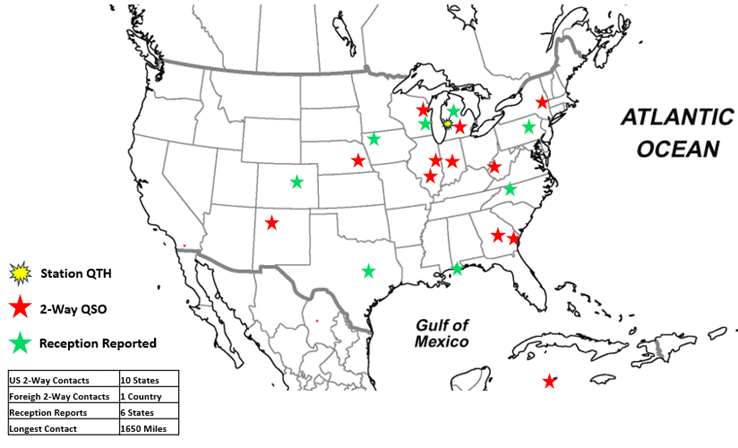
| May 2024 | Publisher: Information Station Specialists | Subscribe to The Source eNews |
| Operating on 630 with a Transceiver You Own | |
| by Paul Dobosz (K8PD) Holland, MI | |
|
Many hams are hesitant to explore operating on 630
meters due to the lack of commercially available
transceivers and antennas. Information Station
Specialists has created a unique filter that allows you
to operate on the 472KHz to 479KHz band using the MARS
modified transceiver that you already own. There’s no
expensive or complicated transverter or transmitter to
buy or build. Modified transceivers may be capable of transmitting on 630 meters, but they lack the proper filtering to remove out-of-band harmonics and spurious signals. Receivers are also vulnerable to overload from out-of-band signals from local AM broadcast stations. The 630 Meter Lowpass Filter (LP.630.PD) is a meticulously designed 7th-order Chebyshev design that provides 44dB (or greater) attenuation of transmitted harmonics and spurs, along with over 30dB of out-of-band receiver overload protection. In-band insertion loss is negligible and SWR is better than 1.2:1. The results speak for themselves. A single evening’s QSOs utilizing of a MARS-modified Icom IC-7300 Transceiver with the 630 Meter Lowpass Filter between it and Information Station Specialists’ Lowdown 630 Meter Antenna for Amateur Radio (630.PD) vertical antenna are shown on the map below. |
|
 |
|
| Modified HF transmitters lack the necessary filtering to ensure a cleanly transmitted signal and to suppress strong out-of-band receiver interference. The following photographs illustrate the unfiltered signal from a modified Icom IC-7300 and its signal after the 630 Meter Lowpass Filter is added. Clean power output of the IC-7300 at 475KHz is typically around 10 watts out of the filter. QSOs on 630 meters are typically made using either FST-4 or CW. | |
 |
 |
| Transmitter without LP.630.PD Filter | Transmitter with LP.630.PD Filter |
|
A Word about Antennas With the wavelength of 630 Meters approaching half a mile, a traditional antenna, such as a quarter-wave vertical or half-wave dipole, won’t fit on the average piece of residential real estate. This doesn’t mean that those living in a city or suburban environment cannot operate successfully on 630 meters. The QSOs on the map above were made with Information Station Specialists Lowdown 630 Meter Antenna for Amateur Radio, which is just 22’ in height. This antenna has allowed hams without the space to erect large antennas and ability to build large loading coils and improvised variometer tuners to get in on the fun of operating on 630 meters. The Lowdown Antenna, teamed with THEMATCHBOX Impedance Matching Transformer, a multi-impedance matching network, provides a small but effective antenna solution for use in typical residential neighborhoods. Teamed with your MARS modified HF transceiver and the 630 Meter Lowpass Filter, it’s a complete package designed to get you on the air. |
|
PO Box 51, Zeeland, Michigan, USA, 49464-0051, Phone 616.772.2300, Email
• • •